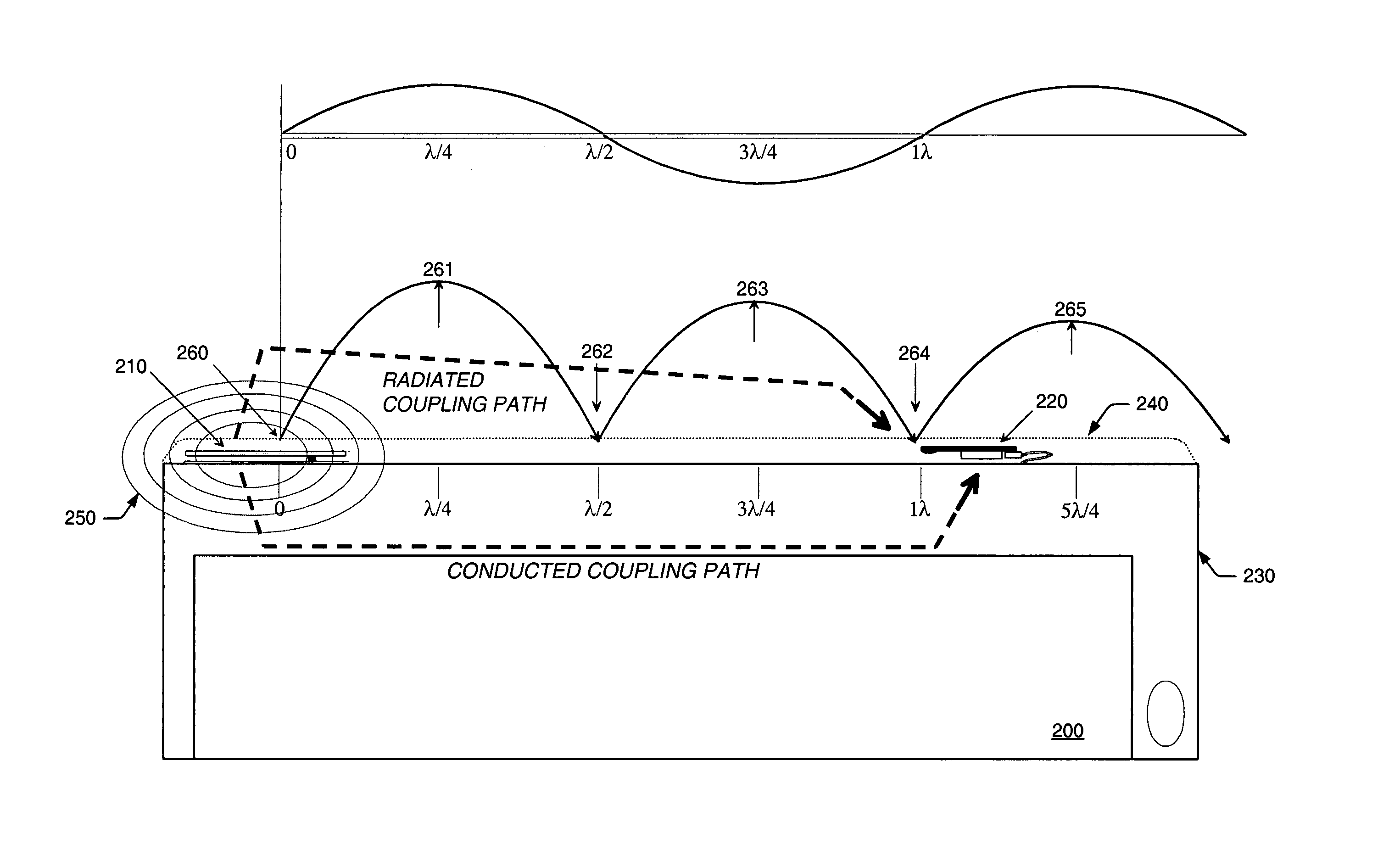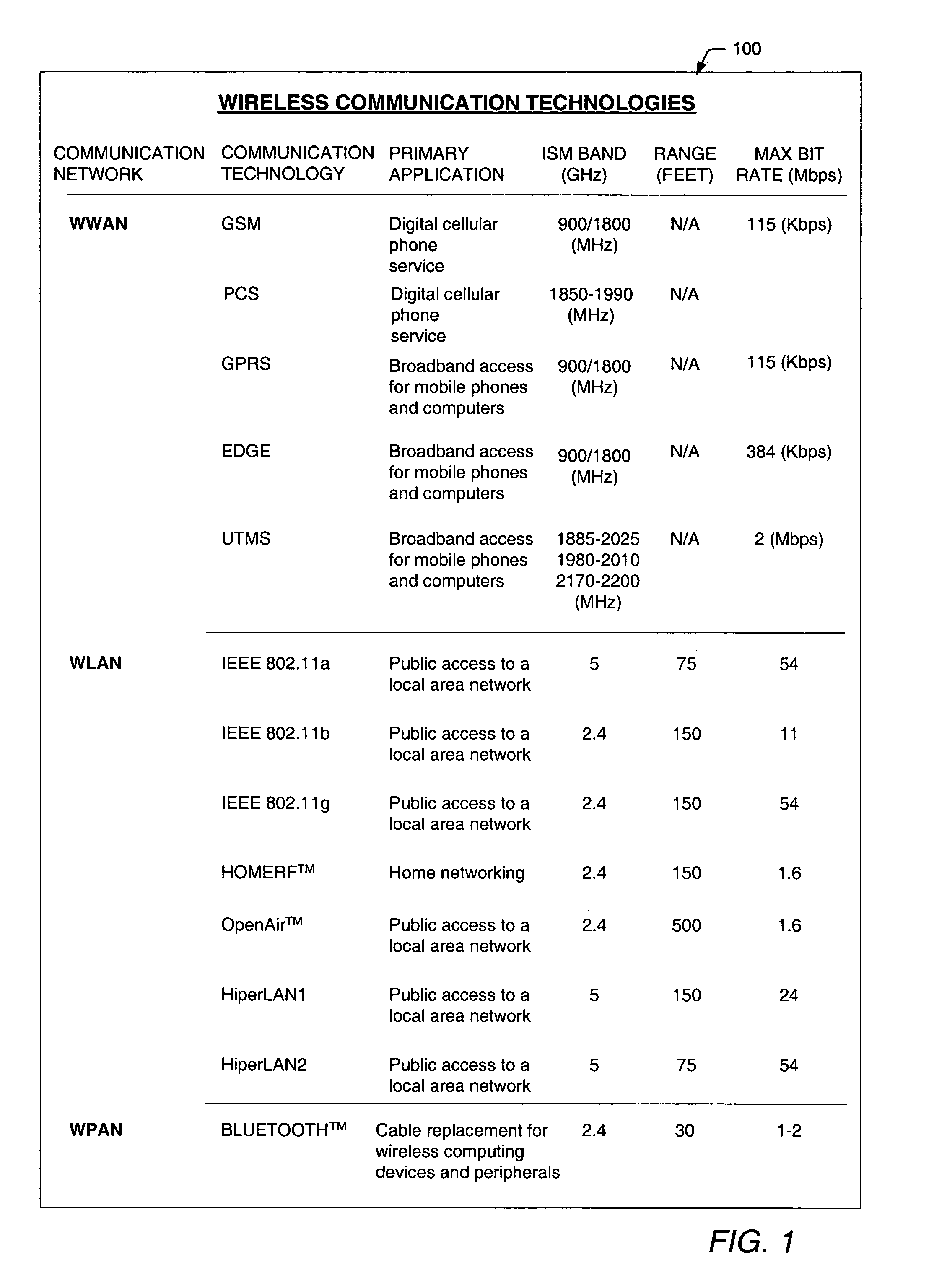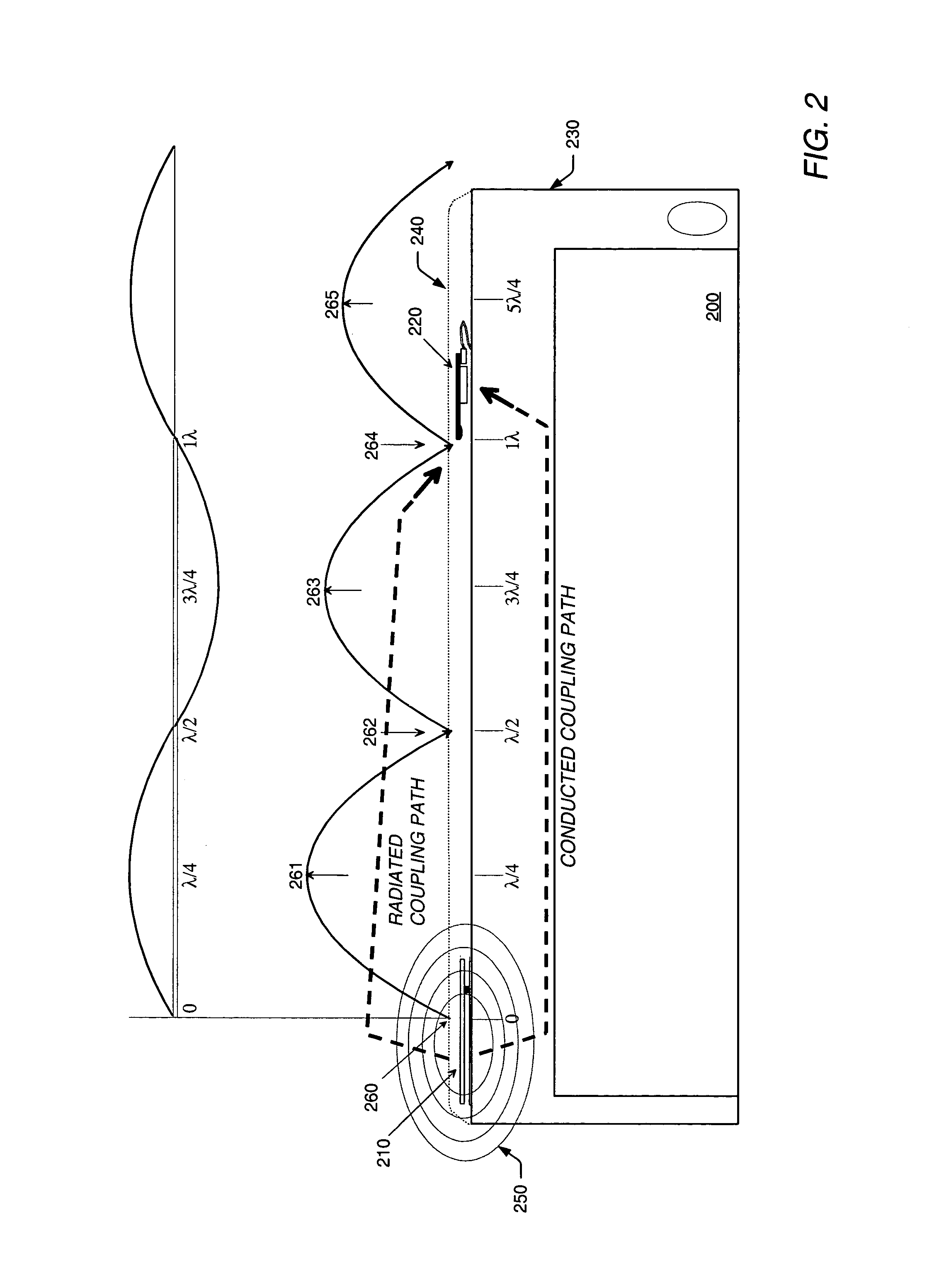System for reducing the electromagnetic interference between two or more antennas coupled to a wireless communication device
- Summary
- Abstract
- Description
- Claims
- Application Information
AI Technical Summary
Benefits of technology
Problems solved by technology
Method used
Image
Examples
Embodiment Construction
[0066]A current trend in wireless telecommunications is the integration of two or more wireless communication technologies within a single communications device. For example, PDA manufacturers have been adding WWAN (e.g., GSM / PCS and GPRS) and WLAN (e.g., IEEE 802.11b and HomeRF™) capabilities to their portable computing devices, thereby enabling the devices to transmit voice communications, in addition to providing broadband wireless access in corporate / home environments and WLAN hotspots. Computer manufacturers have also been adding WLAN (e.g., IEEE 802.11b and HomeRF™) and WPAN (e.g., Bluetooth™) capabilities to portable PCs, providing broadband access to WLANs and wireless connectivity to a growing number of WPAN-equipped devices. By combining two or more different communication technologies, the consumer is afforded greater mobility, accessibility and versatility within a single communication device.
[0067]Chart 100 of FIG. 1 illustrates a few examples of currently available wir...
PUM
 Login to View More
Login to View More Abstract
Description
Claims
Application Information
 Login to View More
Login to View More - Generate Ideas
- Intellectual Property
- Life Sciences
- Materials
- Tech Scout
- Unparalleled Data Quality
- Higher Quality Content
- 60% Fewer Hallucinations
Browse by: Latest US Patents, China's latest patents, Technical Efficacy Thesaurus, Application Domain, Technology Topic, Popular Technical Reports.
© 2025 PatSnap. All rights reserved.Legal|Privacy policy|Modern Slavery Act Transparency Statement|Sitemap|About US| Contact US: help@patsnap.com



